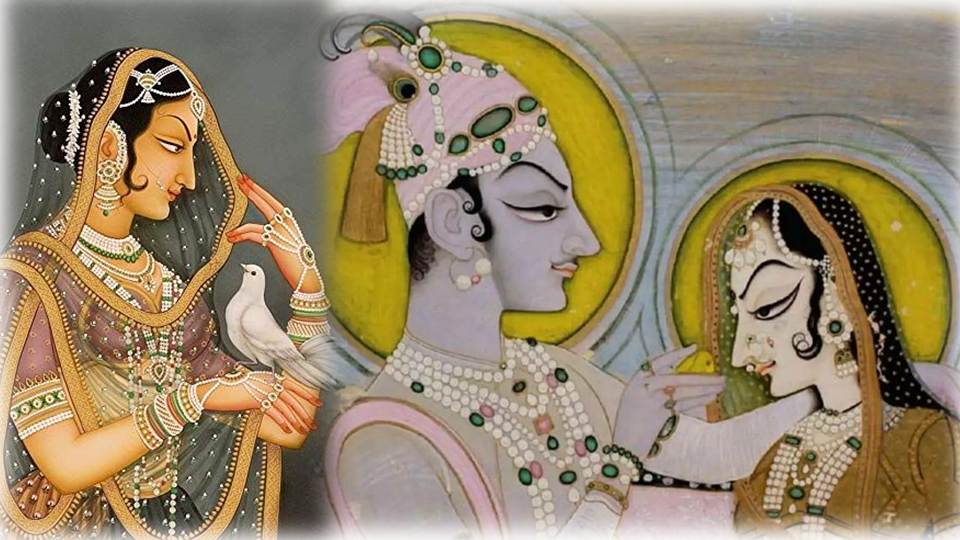Bani Thani Art: Art has been an integral part of culture for many centuries. Then the question arises: what is art? The dictionary definition of art says that it is “the conscious use of skill and creative imagination, especially in the production of aesthetic objects. To put it in the words of Leo Tolstoy, “Art is the activity by which a person, having experienced an emotion, intentionally transmits it to others.”
Native art, rich heritage, and culture play an important role in the holistic development of any nation. They represent a unique and beautiful set of shared attitudes, values, goals, and practices. Culture and creativity have a deep influence on every sector, be it economic, social, or other activities.
India has been blessed with rich diversities. It has a beautiful blend of diverse cultures, with each having its own uniqueness, pride, and aesthetic value. From time immemorial, Bhartiya culture has been accepted to assign an inherent value or a purpose to art. Indians have been looking beyond materialistic things and hold art and culture in high esteem.
India has one of the world’s largest collections of songs, music, dance, theatre, folk traditions, performing arts, rites and rituals, paintings and writings that are known as the “Intangible Cultural Heritage” (ICH) of humanity.
Also read: Dakshina Kannada culture is extremely unique, full marks to Kantara for glorifying it
The Bani Thani Art
One of the timeless Bhartiya art forms born is Bani Thani art. It literally means’ the decked-out lady’ or smart and well dressed. This highly unique art form reflects the rich history and traditions of Krishnagarh. The Bani Thani’s art is a repository of society’s collective memory. This painting style is believed to be more than 300 years old.
Apparently, the development of the Kishangarh style of painting started during the time of Maharaja Roop Singh (1643–1658). The art form reached new heights during the time of Maharaja Sawant Singh (1748–1741).
Bani Thani, originally named Vishnupriya, was a poet and singer employed in the kingdom of Sawant Singh. Later, Maharaja Sawant Singh fell in love with her. In 1727, she was brought to the princely state of Kishangarh in Ajmer district. The district was founded by Maharaja Kisan Singh Rathore in 1609.
In the mid-18th century, Nihal Chand, a Kishangarh artist, first painted Maharani Vishnupriya’s side portrait on the instructions of Maharaja Sawant Singh. The depiction included elongated facial features with arched eyebrows, serpentine spiralling hair, a pointed nose and chin with deeply curved eyes, and lotus-like eyes.
All of this led to the birth of a new style of painting, Bani Thani art. After this Maharani (Radha) painting by Nihal Chand, the painting received wide admiration. In the eyes of art experts, it is considered to be comparable to the painting of Monalisa. But unfortunately, due to ignorance and apathy towards Indian art forms, the Bani Thani art form is struggling to survive.
Apart from that, between the years 1765 and 1780, Nihal Chand made several paintings that became globally renowned. He placed the art form and Kishangarh on the world’s art map. The themes of painting included elephants, hunting wild animals, court scenes, portraits of rulers, and dance forms. These were mostly depicted in the panoramic landscapes that became his signature style.
In the 18th century, the Maharaja of Kishangarh, Sawant Singh, and his beloved Maharani Vishnupriya settled in Vrindavan. They were deeply absorbed in the devotion of Lord Krishna. They spent the rest of their lives in Vrindavan. The samadhis of both are still present in Vrindavan.
Also read: Before You say Fire Crackers are not a Part of Indian Culture, Read these facts first
Notable painters who contributed immensely to the Bani Thani art form
The names of Nihal Chand Mordhwaj, Amar Chand, Sitaram, Nanakram, Ramnath, and Joshi Sawairam are prominent among the painters of the Kishangarh style. Maharaja Sawat Singh, who later became famous as Sant Nagridas, had many paintings in the Kishangarh Chitra style to his name.
Additionally, Vaishnavdas is considered to be one of the finest Bani Thani painters. Based out of Kishangarh, Rajasthan, he trained more than 150 artists and spread the knowledge and skills of the Bani Thani art form.
In 1973, the Central government issued a comparative stamp to honour this beautiful painting art form from Kishangarh, the Bani Thani art. But mere recognition of an art form does not give it enough strength to survive the course of time.
The importance of art has been debated for many years, but due to lack of apathy and documentation, these iconic art forms are losing their shine and glory. It is high time that indigenous cultures are given their due respect and given economic support to flourish. We should not forget that art is as important as other disciplines like science or technology. It has been conveying the message of culture and human evolution in society over a period of time.
Support TFI:
Support us to strengthen the ‘Right’ ideology of cultural nationalism by purchasing the best quality garments from TFI-STORE.COM
